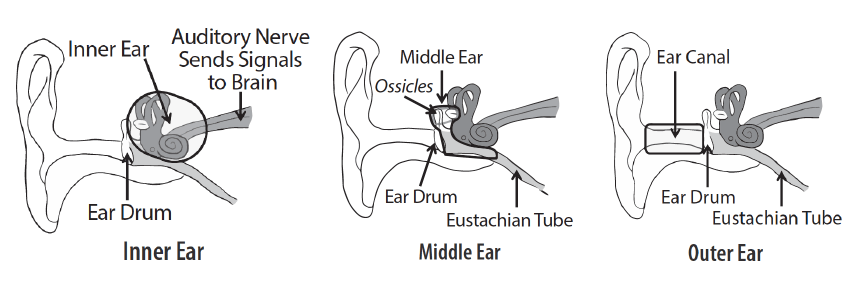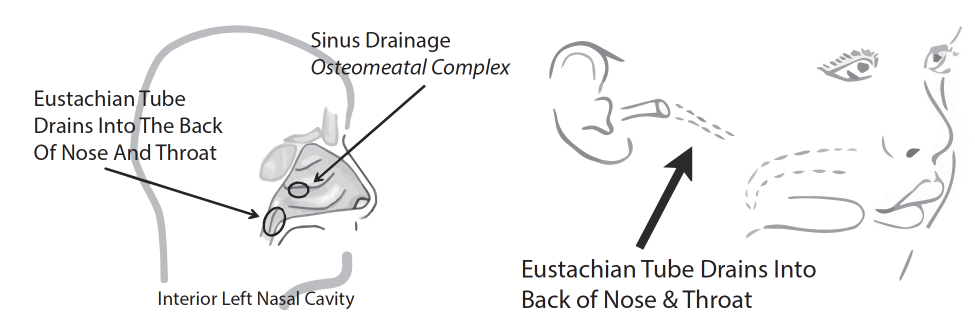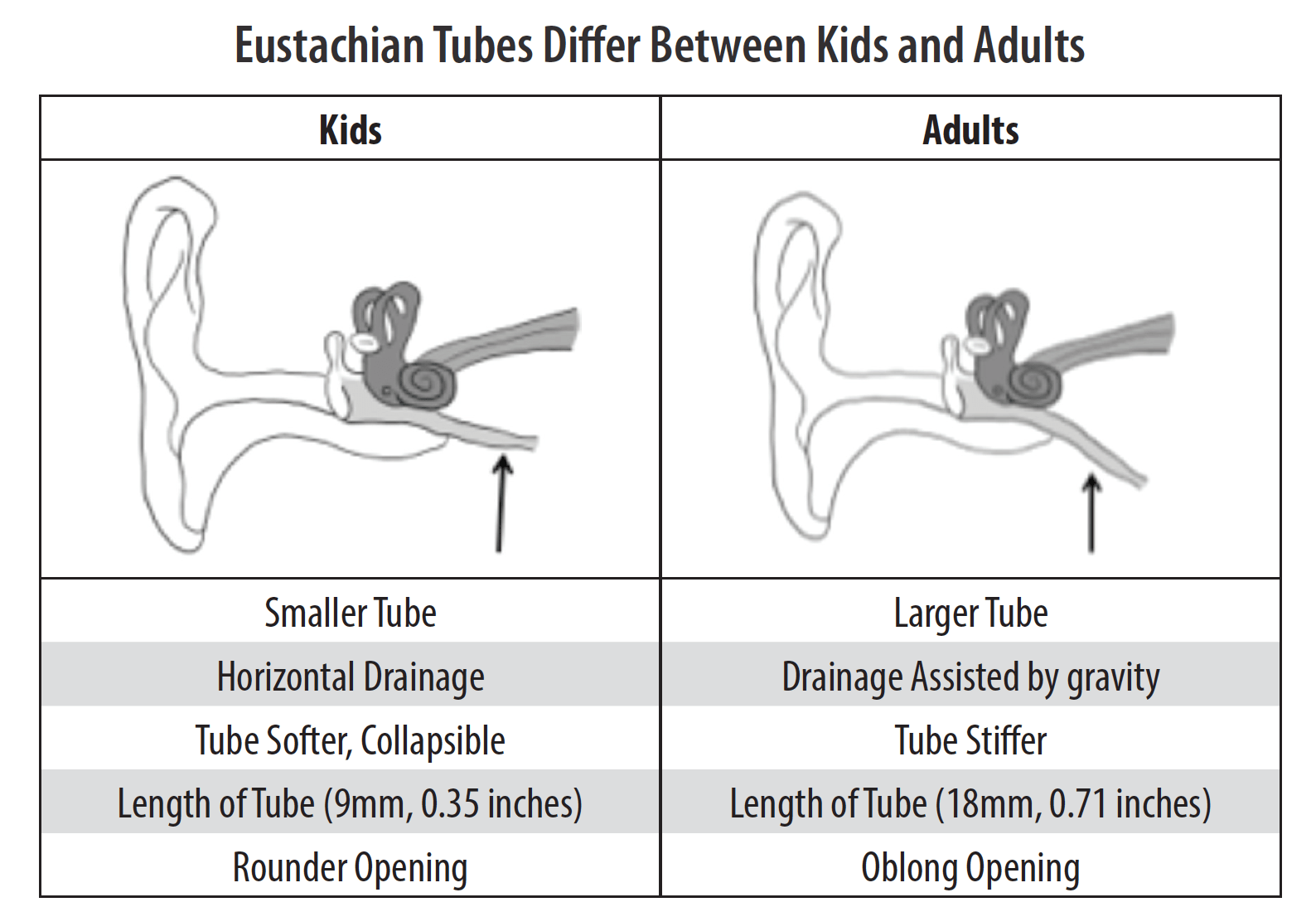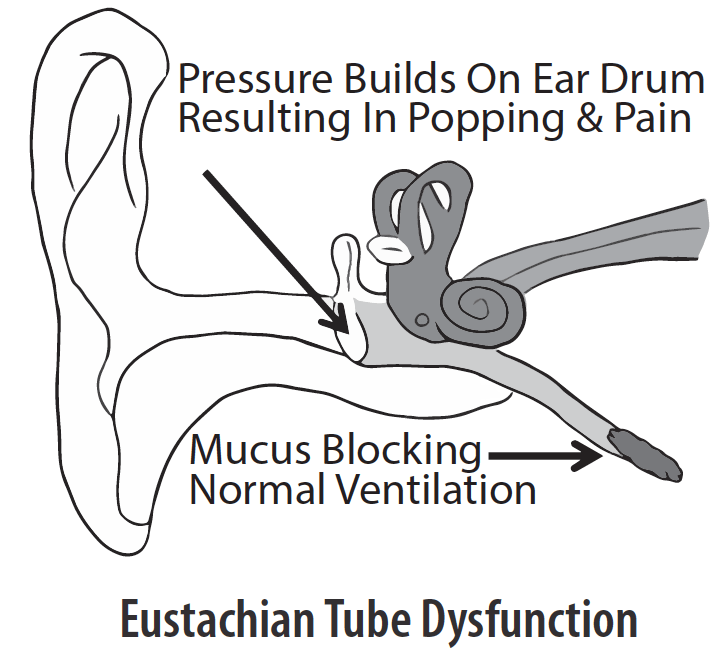Structure Of The Ear
We can’t look inside our own ears but we can sure feel what goes on in there! As you will soon learn, what goes on in the ears is intimately connected to the nose. Three distinct areas make up the human ear: the outer, the middle and the inner ear.
The “ear canal” is part of the outer ear. This is the part we can see, the part that can get blocked with ear wax, and the part that captures sound from outside the body.

The ear canal carries sound to a thin translucent membrane called the eardrum, or the tympanic membrane. It is the only portion a medical provider can easily observe in a clinic setting when evaluating a possible ear infection.
On the other side of the tympanic membrane is the middle ear, an air-filled chamber that contains the ossicles (three tiny bones all linked together). When the eardrum vibrates with sound coming from the ear canal, the ossicles pick up the vibrations and amplify them, carrying them to the inner ear. The inner ear translates those vibrations into electrical signals and sends them to the auditory nerve, which is connected to the brain. When these nerve impulses reach the brain, they’re interpreted as sound.
How does this involve the nose? Well, there is a direct connection between the middle ear and the nose.
For sound vibrations to send the signals to the inner ear, the middle part of the ear must be ventilated, allowing the air pressure on either side of the tympanic membrane to equalize. The Eustachian tube is responsible for this ventilation. This tube begins in the middle ear and extends into the back of the upper throat, approximately at the same level as your nostrils. The portion of this tube nearest the eardrum is always open, protecting the middle ear. The end that drains into the back of the throat is normally closed. We open and close this part of the Eustachian tube when we chew and suck.
In adults, the Eustachian tube is approximately 35 mm long (1.38 inches). In children, it is significantly smaller and more difficult to drain for many reasons.


Who Cares When Your Eustachian Tube Does Not Work? You Do!

The Eustachian tube drains mucus from the middle ear into the back of the throat. Upper airway infections or allergies can cause this tiny tube to become swollen, trapping bacteria and causing middle ear infections.
If air is bubbling up and mucus is flowing down and out into the throat, all is well. But for this to happen it is vital that the Eustachian tube remain open and free to drain. None of this can be accomplished if there is a mucus plug or if there is swelling, as both plugging and swelling prevent natural drainage.
Again, as the nose goes, the ears follow. Nasal health is critical for healthy ears.
